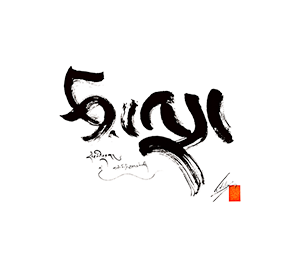- Foreword by His Holiness Penor Rinpocheix
- Acknowledgmentsxi
- Source Abbreviationsxv
- Annotations, Diacritics, and Transcriptionxvii
- 1. INTRODUCTION1
- 1.1 Mipham Rinpoche and the Beacon of Certainty1
- 1.2 Outline2
- 1.3 The Beacon of Certainty: Context and Significance2
- 1.3.1 Dialectical Philosophy and the Great Perfection2
- 1.3.2 The Beacons Purpose5
- 1.3.3 The Beacons Comparative Method6
- 1.4 Methods and Sources7
- 1.4.1 Tibetan Language Sources8
- 1.4.1.1 Editions of the Beacon8
- 1.4.2 English Language Sources11
- 1.5 The Contributions of this Work14
- 2. THE LIFE AND WORKS OF MIPHAM RINPOCHE19
- 2.1 Accounts of Mipham’s Life22
- 2.2 The Essential Hagiography by mKhan chen Kun bzang dpal ldan23
- 3. INDO-TIBETAN BUDDHISM: AN OVERVIEW41
- 3.1 Historical and Philosophical Dimensions of Buddhism41
- 3.2 Hīnayāna and Mahāyāna42
- 3.3 Important Teachings of Mahāyāna Scriptures45
- 3.3.1 Prajñāpāramitā45
- 3.3.2 The Saṃdhinirmocana and the "Essence Sūtras"47
- 3.3.3 Sources for Buddhist Hermeneutics49
- 3.4 Traditions of Indian Madhyamaka51
- 3.4.1 Origins of Prāsaṅgika and Svātantrika Madhyamaka52
- 3.4.2 Yogācāra and the Yogācāra Madhyamaka Synthesis55
- 3.4.3 Madhyamaka and Pramāṇa57
- 3.5 Vajrayāna: Buddhist Tantra60
- 3.5.1 Indian Origins60
- 3.5.2 Philosophical Dimensions of Tantra62
- 3.5.3 Styles of Tantric Practice68
- 4. TIBETAN BUDDHIST TRADITIONS AND THE GREAT PERFECTION71
- 4.1 The Yarlung Empire and the Introduction of Buddhism72
- 4.2 Early Nyingma Teachers and Texts74
- 4.2.1 The Treasure Tradition76
- 4.2.2 The Great Perfection77
- 4.2.2.1 Origins77
- 4.2.2.2 The View of the Great Perfection77
- 4.2.2.3 The Three Classes of Great Perfection79
- 4.2.24 Great Perfection in Practice80
- 4.2.3 The Great Perfection in Comparative Philosophical Texts81
- 4.2.3.1 Ch’an and the Great Perfection in the bSam gtan mig sgron82
- 4.2.3.2 Other Early Doxographies84
- 4.3 The New Translation Period and the Nyingma Tradition86
- 4.3.1 Rong zom Paṇḍita88
- 4.3.2 The Rise of Scholasticism91
- 4.3.3 Klong chen rab 'byams92
- 4.3.4 Nyingma Monasticism and the Ecumenical Movement (ris med)97
- 4.3.5 A Nyingma Philosophy?98
- 5. PHILOSOPHICAL DISTINCTIONS OF MIPHAM'S THOUGHT101
- 5.1 The Gelug Philosophical Tradition101
- 5.2 Theory, Practice, and Ultimate Reality104
- 5.3 Valid Cognition and Philosophical Analysis107
- 5.4 The Philosophy of Extrinsic Emptiness111
- 5.5 Mipham’s Interpretation of Extrinsic Emptiness and Tathāgatagarbha114
- 5.6 Mipham’s Position on the Tathāgatagarbha117
- 6. The Beacon of Certainty125
- 6.1 Recapitulation of Earlier Discussions125
- 6.2 The Topics of the Beacon126
- 6.2.1 The Beacon and Tsongkhapa’s Eight Great Difficult Points128
- 6.2.2 Some Observations on Topics 5, 6, and 7130
- 6.3 View, Meditative Practice, and Ultimate Reality in the Beacon133
- 6.3.I Anupakṣas and Pūrvapakṣas: An Overview133
- 6.3.1.1 Essential Issues and Arguments in Topics 1, 3, and 4134
- 6.3.1.2 Go ram pa's Analysis of View and Meditation in the TSB136
- 6.3.1.2.1 Go ram pa on the Ultimate View137
- 6.3.1.2.2 Go ram pa on Meditative Practice 139
- 6.3.2 Topic 1: Philosophical View and Rational Negation141
- 6.3.2.1 Tsongkhapa on the Negandum and Its Substratum141
- 6.3.2.2 Mipham's Theory of Negation144
- 6.3.2.2.1 Negation and the Definition of the Ultimate144
- 6.3.2.2.2 Mipham's Analysis of Negation in the MAZL146
- 6.3.2.2.3 Mipham's Theory of the Ultimate: Gnosis and Coalescence151
- 6.3.3 Topics 3 and 4: Tsongkhapa and Mipham on Modal Apprehension and
Analytical Reasoning157 - 6.3.3.1 Tsongkhapa on the Role of Conceptuality in Meditation157
- 6.3.3.1.1 Yon tan rgya mtsho on Modal Apprehension and Analysis160
- 7. ASCERTAINMENT (nges pa) AND CERTAINTY (nges shes):
SOME CONCLUSIONS169 - 7.1 Mipham’s Place in Tibetan Philosophy182
- 7.2 Philosophical Texts and Human Relatedness184
- 8. THE TRANSLATION OF THE Beacon of Certainty187
- 8.1 Terminology and Syntax187
- 8.2 Technical Terms188
- 8.3 Proper Names192
- 8.4 On the Use and Disuse of Sanskrit Terms192
- 8.5 Outline of the Beacon and Khro shul 'jam rdor's Commentary193
- Abbreviations and Bibliography193
- Introduction194
- Topic 1196
- Topic 2199
- Topic 3203
- Topic 4208
- Topic 5214
- Topic 6219
- Topic 7227
- Conclusion237
- 9. STAINLESS LIGHT: A Commentary on the Beacon of Certainty241
- Topic 1251
- Topic 2271
- Topic 3291
- Topic 4306
- Topic 5329
- Topic 6345
- Topic 7371
- Conclusion404
- 10. The LION'S ROAR PROCLAIMING EXTRINSIC EMPTINESS415
- Appendix: Explanatory Diagrams and Tables
- Diagram 1: Conceptuality and True Existence According to Go ram pa and
Mipham429 - Diagram 2: Conceptuality and True Existence According to Tsongkhapa430
- Table 1: Mipham's System of Four Pramāṇas431
- Table 2: Traditions, Two-truth Paradigms, and Their Sources432
- Table 3 Pramāṇas and Their Paradigms of Truth and Negation433
- Table 4: The Role of Ascertainment and Conceptuality According to Mipham
and Gelug Philosophers434 - Notes to Tables435
- Glossary of Technical Terms439
- Notes461
- Bibliography of Works Consulted533
- Index557


